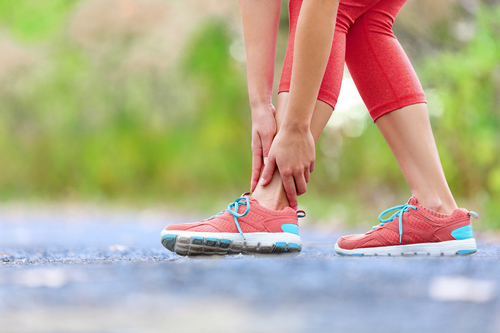
If you’re an athlete, then you know sports will take its toll on your body. Done regularly, movements like running, jumping, or pivoting can negatively impact joints, muscles, and bones. Furthermore, improper form can increase this risk.
Our highly qualified staff will diagnose and treat your sports injury. However, it is important for athletes to have their own understanding of injury conditions, prevention, and diagnosis.
This post has been updated from its original version to provide accuracy and education to our patients.
Education is Key to Treating Sports Injuries
There are a few areas of the body that are more susceptible to sports injuries, such as the ankle, foot, shoulder, and elbow. The ankle’s anatomy provides it with a very unique and stable design. Your ankle can withstand the pressure of 1.5 times your body weight when walking, and 8 times that when running!
The elbow and shoulder are also common areas that athletes tend to injure. Often, this is due to overuse while practicing or through injury while playing the game. Artificial Joint Replacement of the elbow (also known as an elbow anthroplasty) has become a widely used procedure, creating an “artificial elbow.” Although usually a last resort within sports medicine, this surgical intervention has amazing success for patient’s pain relief and return of function and repair to a damaged elbow joint.
7 Sports Injury Prevention Tips
Whether you are a student or a professional, these common tips will help prevent sports injuries.
- Dynamic stretching before any activity can help prevent sports injuries
- Following activities, do static stretching to ease muscles and joints
- Consult a physical therapist or trainer on proper form
- Maintain form during training and competitions
- Stay active during off-seasons
- Take a day a week to rest and recover
- Stay hydrated

Did you know?
The foot is actually one of the most frequently injured areas of the body. Some of the sports injuries we treat include:
- Heel Bone Fractures
- Midfoot Injuries
- Fractures
- Arthritis
- Clubfoot
- Bunions

Diagnostic Imaging on Long Island
At Central Orthopedic Group we provide the most advanced imaging technology available: Ultrasounds, X-Rays, Magnetic Resonance Imaging (MRI), and Electromyography and Nerve Conductivity Velocity (EMG/NCV) Testing.
Having accurate imaging of your injury allows for the best possible treatment plan to be developed between you and your doctor. The right picture can prevent misdiagnosis and provide the opportunity to recommend less invasive treatments to certain sports injuries.
What Diagnostic Approach Best Fits Your Sports Injury?
Ultra Sound Imaging
Ultra Sound Imaging (Sonography) focuses mostly on the soft tissues of the body, and is therefore best for injuries such as:
- Soft Tissue Injuries
- Muscle Injuries
- Ligament Fractures
- Tendon Fractures & Ruptures
X-Rays
X-rays take pictures of your bones. Our in-house X-ray machines provide print outs on film, plain paper, or CD formats to fit your needs. Common sports injuries that are usually diagnosed with X-rays, include:
- Bone Breaks
- Fractures of the Bone
- Bone Alignment Issues
MRI
MRI’s are useful in diagnosing many orthopedic and musculoskeletal disorders, allowing doctors to see varies body structures at once that other imaging devices cannot pick up together. MRI’s provide highly detailed images and are commonly preferred for injuries such as:
- Traumas and sports injuries in which there may be multiple areas of the body that have been damaged
- Injuries that involve soft tissue enclosed by bone, such as in the head (brain) or back (spinal cord).
- Ligament Fractures
- Meniscal and ligament tears of the knee
- Rotator cuff and labrum tears in the shoulder
- Back pain without an obvious cause can be diagnosed with an MRI
EMG/NCV
EMG/NCV Testing provides electrical stimulation to the muscles and nerves of your body to help diagnose injuries and diseases. Some of the diseases that are best diagnosed with this method of testing include:
- Neuropathies
- Myopathies
- Myastenia Gravis
- Sciatica
Contact our Long Island Orthopedic Physicians
If you are suffering from pain due to a sports injury, we can help diagnose that pain quickly and accurately.
Our offices are conveniently located in Plainview, Rockville Centre, and Massapequa. Contact us by phone at 516-681-3332 or online by clicking here.
